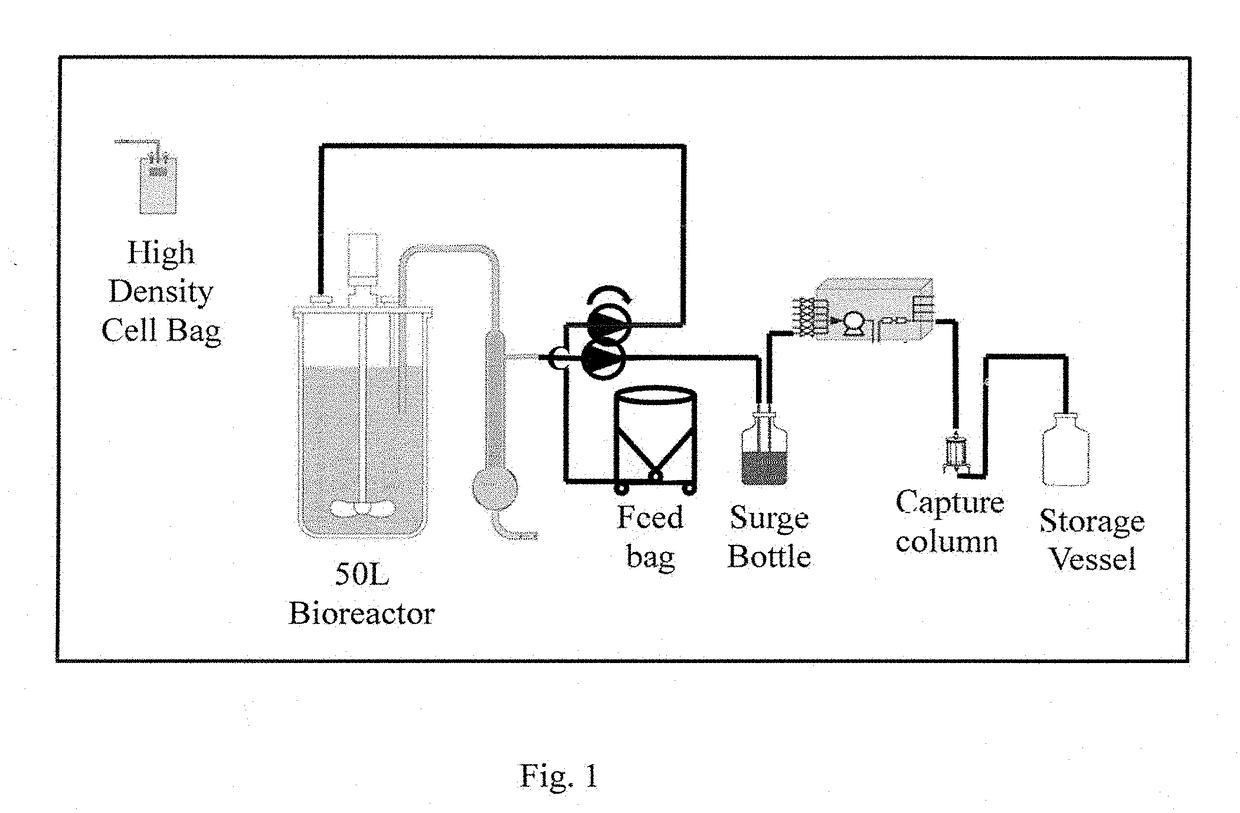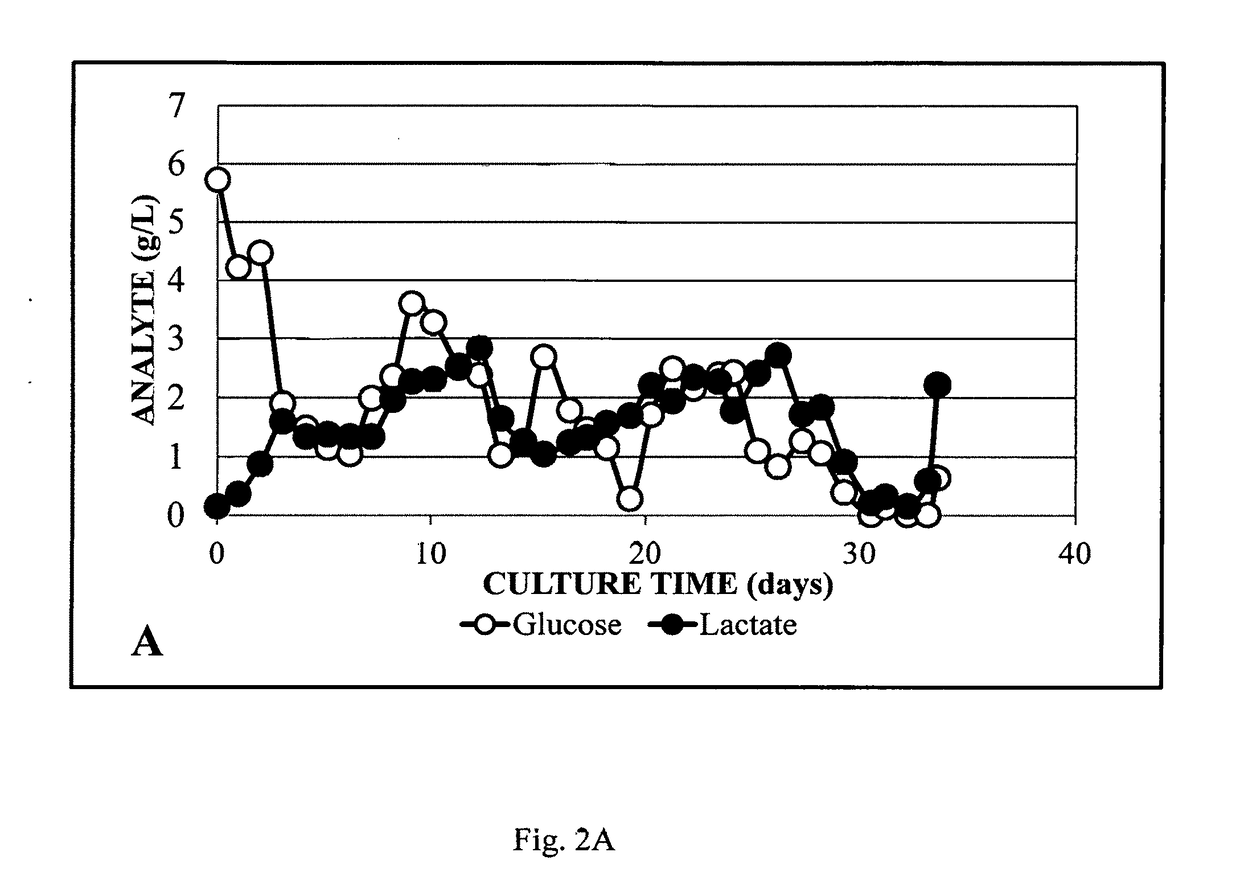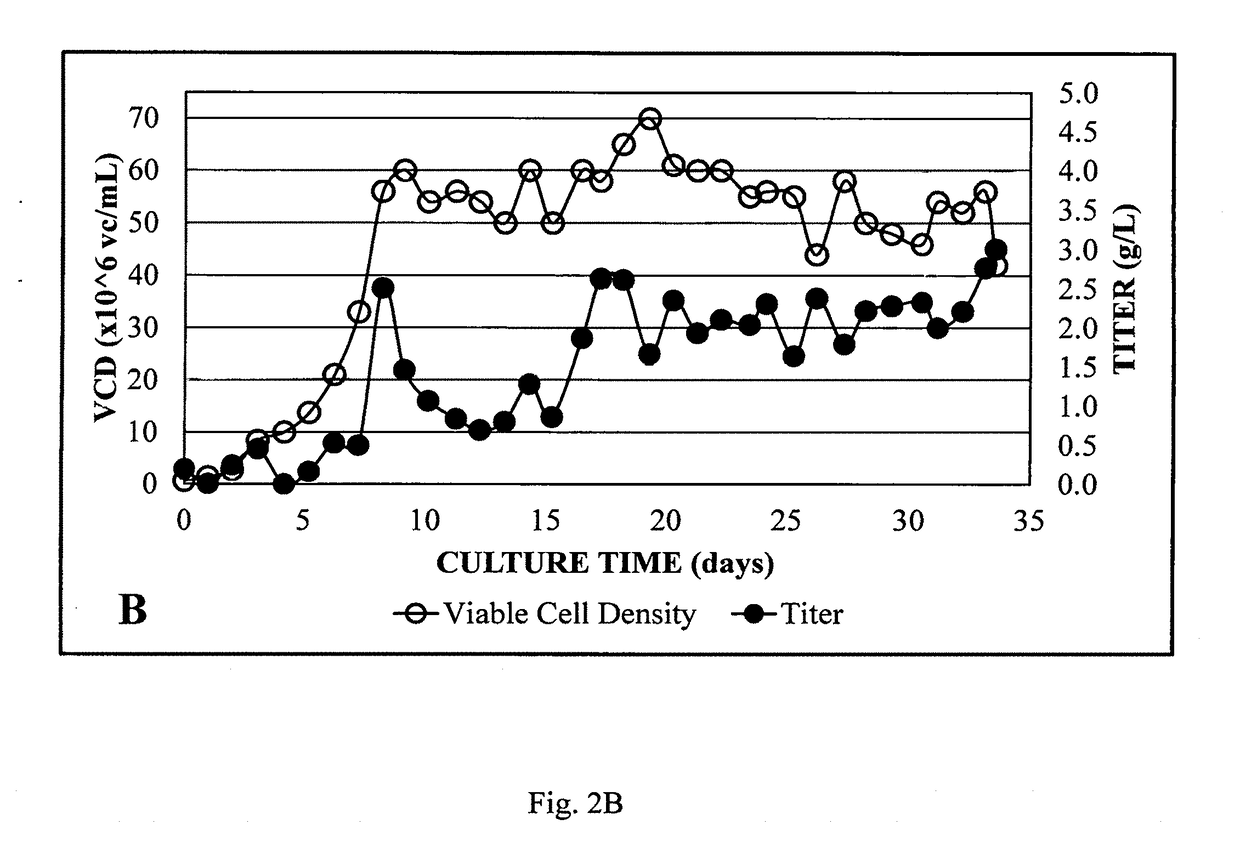System for rapid continuous manufacturing of monoclonal antibodies
a monoclonal antibody and manufacturing system technology, applied in the direction of solid sorbent liquid separation, separation process, chemical apparatus and processes, etc., can solve the problems of reduced cell viability, control problems, and current knowledge of continuous capture chromatography using multiple columns, and achieve high cell densities, high production efficiency, and high cell densities
- Summary
- Abstract
- Description
- Claims
- Application Information
AI Technical Summary
Benefits of technology
Problems solved by technology
Method used
Image
Examples
example 1
[0047]Perfusion mode cell culture using was conducted on bioreactors with 2 L working volume using an ATF2 system equipped with a 0.2 μm hollow fiber filter. Dissolved oxygen was controlled using O2 gas via a sintered sparger. Cell density (Life Technologies, Grand Island, N.Y.), nutrients and waste were monitored by offline measurements. Chemically defined media was modified via internal experiments to optimize bioreactor performance and proprietary CHO cell lines producing biosimilars were used. The cells were seeded at 0.5 million cells / mL. Cell growth and waste were controlled by perfusion rate and nutrients were controlled by media optimization. The process was optimized to an average perfusion rate of one reactor volume / day. pH was controlled around 7.2 with sodium bicarbonate and CO2 gas. DO was kept above 40%. The harvest was loaded directly onto a single Protein A column without additional clarification.
[0048]Using the 2 L bioreactor, the perfusion rate was optimized during...
PUM
| Property | Measurement | Unit |
|---|---|---|
| pore size | aaaaa | aaaaa |
| pore size | aaaaa | aaaaa |
| pore size | aaaaa | aaaaa |
Abstract
Description
Claims
Application Information
 Login to View More
Login to View More - R&D
- Intellectual Property
- Life Sciences
- Materials
- Tech Scout
- Unparalleled Data Quality
- Higher Quality Content
- 60% Fewer Hallucinations
Browse by: Latest US Patents, China's latest patents, Technical Efficacy Thesaurus, Application Domain, Technology Topic, Popular Technical Reports.
© 2025 PatSnap. All rights reserved.Legal|Privacy policy|Modern Slavery Act Transparency Statement|Sitemap|About US| Contact US: help@patsnap.com



